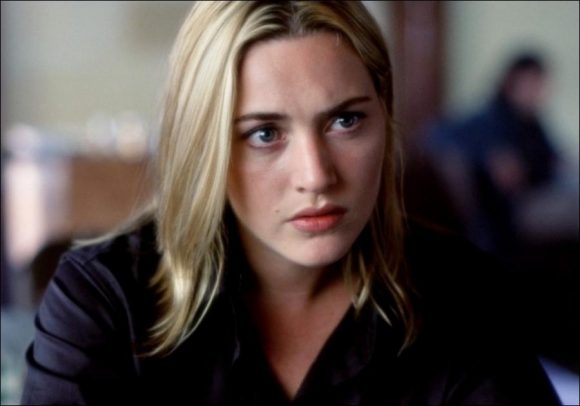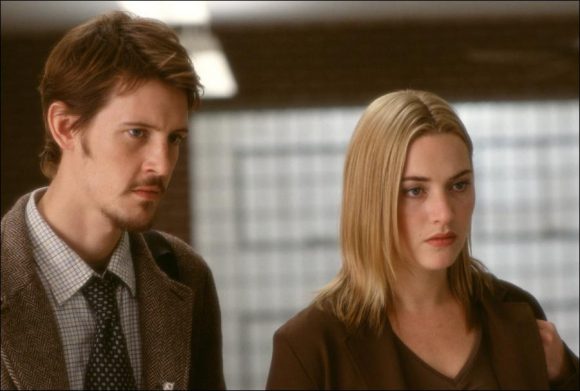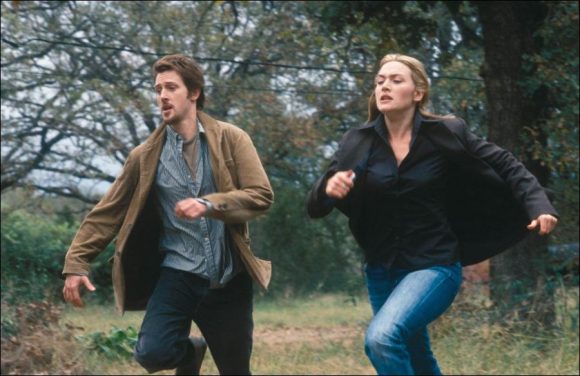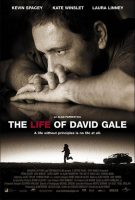The death penalty is an important topic of discussion. Between Life and Death, a film that deals with this issue and shows its attitude from the beginning. “This punishment is unfair, and sometimes the innocent may choose to sacrifice themselves.”
However, there are many points in the film that do not go well and when we follow them, we always go to the same person, the director. He won’t give up his temper. The British Alan Parker has done what he has to do again and has an impressive finale on paper, shooting the scene in the worst possible way with a shaking expression. The film, which could turn into a shocking structure in the hands of a good narrator, has lost a lot of blood due to Parker’s preferences.
Tim Robbins shot Dead Man Walking 8 years ago. Robbins, who also adapted the script from Helen Prejean’s book, had a thorny success, reflecting both the valuable text and the imposition of the death penalty on both sides. Parker’s film also puts the death penalty on the table. But unfortunately, the subject remains on the table / board.
Instead of telling his curiosity about the subject, based on the story of his main character, Parker reaches his judgment immediately and the beauty of the story that has to be climaxed in the final is eliminated. We didn’t waste these sentences. We’ll go through the film’s anatomy, or rather the autopsy, but let’s remember what we’re going to talk about first.

Dr. David Gale (Kevin Spacey) is a well-respected professor who supports the death penalty opponents and participates in many actions. However, Gale’s life is suddenly turned upside down because of a forbidden relationship with one of her students. First she is accused of rape by the girl. Then he is severed from his wife and his beloved son. Despite his laundering, he turns into a permanent stain on the charge of rape, and the sun is plastered with mud. Gale’s college career ends.
As if all this wasn’t enough, Gale is accused of raping and killing one of her anti-war spokespersons, her close friend Constance Harraway (Laura Linney). Sentenced to death for years, David Gale asks Bitsey Bloom (Kate Winslet), a young but hardcore journalist, to interview him three days before his execution. This three-day interview will become an experience that shakes Bloom’s prejudices. Gale’s life is in the hands of this young woman.
Bitsey is a tough reporter. So much so that just to emphasize this aspect, there is a weak character in the role of an intern. But Bitsey, After Gale’s telling, she becomes so much that she can no longer hold her tears and sobs. After this highly transformed transformation, Bitsey becomes alarmed and He’s trying to save Gale’s life. But Parker keeps backstage scenes so long, delaying our return to real time that maybe Bitsey only has a few minutes to stop the execution. It may even be possible to arrest Parker for unintentional murder! Because the director is also the director of the script. However, Parker didn’t see the reflection of the comebacks as he did in the written text. Moreover, the feedbacks were not evenly placed in the film.
Here, I would like to open a parenthesis to this fiction choice which distorts the narrative. In the films, where the comebacks are of great importance, directors often shoot these scenes and scenes from film time in different time periods. For example, as Parker points out in his production notes, the scene where Spacey talks about Socrates in a drunken street is the last actor’s shot. After this scene is a celebration party and Spacey says goodbye to the set. In the midst of the dramatic structure,
Kevin Spacey is an actor across the board, who surely knows how to be in psychology. In that scene, he becomes a spirit that fits the dramatic structure. But I wonder if the director can change. Or let’s ask: Can any director handle this? When he shoots that scene and sends the actor off the set, doesn’t he wonder if I can make this scene more prominent in the movie? When you sit at the editing table with tens of thousands of feet of film, doesn’t a director deviate from his fiction preferences for that scene? If creativity is a sense of continuity, isn’t it sometimes unavoidable for a director to experience these problems? Isn’t it natural?
Taking backstage scenes first and leaving the filmic time scenes to later may become a necessity depending on the money provided by the producer studio and the circumstances of the actors’ program. In this respect, we do not criticize Parker. But I can’t help but wonder whether this profesyonel professional li can be a flaw in the fact that in many films where the dramatic structure is disrupted, the problems of narration / fiction stand out.
Parker’s biggest problem is his generalization. “Exceptions don’t break the rule.” In fact, this statement is expressed by the state governor at the end of the film. Perhaps this anti-capitalist film is disintegrating and exploding at this point, even if we ignore its disruptive dramatic structure – I don’t know how we can handle it. A narrator, especially a narrator who works on a time-precious art such as cinema, will of course accept some generalizations and make minimalist choices when necessary. However, the success of making a minimalist choice is to make the right abbreviations.
Generalizations prevent us from seeing many details. Should an institution in which 100 people work and 70 of them face alcohol problems now or in the past, should be called “alcoholic”? Or should it be defined as an institution where 70 percent of its employees have alcohol problems? If more than half a glass is full, do we have to choose between “full” or “empty”? Is it that hard to say “more than half the glass is full”? Why are we trying to reach one of the two extremes? Why do we need to mold everything? If we do so, with what will we explain the evil in the good, the good in the bad? Or will we ignore it?
Here, Parker tries to identify people and events, let alone a few, sometimes based on just one example. That’s why he often doesn’t fully understand what he thinks is worth filming. He looks at a few examples, comes to quick fill, hangs with the wrong people. Instead of fine weaving, we buy ready-made fabrics from some merchants. It’s like Sir.
I wonder, as a means of expression in cinema; I wonder if there is someone who is so adept at making eye-eyebrows, who plays political badness so badly, and who needs to take a stand on the subject he’s dealing with, even if he’s on the right side, he’s so good at putting it in his face? Wasn’t Parker the one who burned the whole farm for a few chickens laying eggs on the Midnight Express?
Between Death and Life is said to be anti-death. So how does Parker show his opponents of the death penalty? Dr. Gale, who went on the air with the Governor of the State and talked him down, could not rein his ambition and lost his advantageous position. Hallaway devotes his whole life to the abolition of the death penalty, and even thanks to the film’s professor of philology, he makes a very impressive speech. But Hallaway, walking around in a neglected and diseased state, is suffering from blood cancer as if punished. Hallaway’s drama is no less than Dr. Gale’s.
It’s a real pleasure to watch Laura Linney, one of my actors. We’ve been chasing Linney since Primal Fear, where Edward Norton stands out. British actress Kate Winslet, although the lines are not very good labor. He was not content with storing British accents successfully, but added the accent of East America. Kevin Spacey seems to repeat himself as the inevitable handicap of perfection and stability.
After sexual intercourse with his young student, he was Verbal of the Ordinary Suspects, who looked on the contrary in his mirror. It was John Doe in Se7en who wavered down the aisle after losing his job. It was Eugene at Pay It Forward who gave an impressive speech to his students in the hall. By the way, dr. Leon Rippy, who appears as Gale’s reluctant attorney, must appear in a vampire film, especially because of his tooth structure.
If there is animation or video-clips, even if the film is a musical, it is necessary to acknowledge that Alan Parker has taken advantage of the clips and commercials. But we told you, Parker’s using a weave. Like Pink Floyd’s The Wall, which uses the reputation of Pink Floyd, who wrote the manifesto of the opposition, to praise Roger Waters.
It is possible to see musical films such as The Fame, The Commitments and Evita as the joyful periods of the director. Even though I suspect that the beautiful images in Evita are mostly produced by the director of photography Darius Khondji, one of the men who created the atmosphere at Se7en. In addition, Alan Parker’s films such as Birdy and Angel Heart cannot be liked. But every time I’m asked about these two films, I think of the director last.
Even though we criticize the director, Between Death and Life, the importance of the subject, despite the performer performances and pity, the final, a film with a certain plus. Therefore, it is a work between iyi good ile and ız bad ız which we will have difficulty in making one-word interpretation about. So somewhere between the two extreme jurisdictions. But we said, maybe, we don’t have to choose either.
All about The Life of David Gale movie.
The Life of David Gale (2003)
Directed by: Alan Parker
Starring: Kevin Spacey, Kate Winslet, Laura Linney, Matt Craven, Jim Beaver, Rhona Mitra, Brandy Little, Gabriel Mann, Cindy Waite, Leon Rippy, Jesse De Luna
Screenplay by: Charles Randolph
Production Design by: Geoffrey Kirkland
Cinematography by: Michael Seresin
Film Editing by: Gerry Hamblin
Costume Design by: Renee Ehrlich Kalfus
Set Decoration by: Jennifer Williams
Music by: Alex Parker, Jake Parker
MPAA Rating: R for violent images, nudity, language and sexuality.
Distributed by: Universal Pictures
Release Date: February 21, 2093
Views: 365





